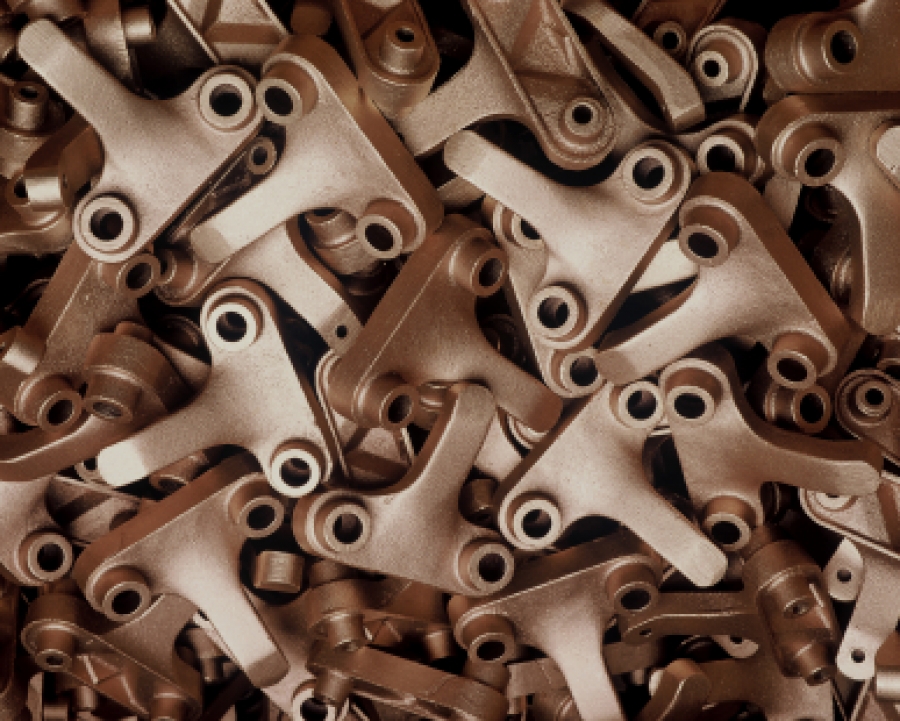Metal Castings
Written by
Buildipedia Staff
Metal casting is the process in which metal is melted and poured into molds, where it is allowed to solidify. Metal casting is one of the world’s largest industries, with over 2000 metal casters producing 13 to 15 million tons of castings annually. Metal casting is often used for making complex shapes which would otherwise be difficult or more expensive to produce.

Topic Summary
There are four categories of metal casting: sand casting, permanent mold, ceramic casting and rapid prototyping. Each type of casting has unique characteristics, advantages and disadvantages.
- Sand casting includes green sand molding, chemically bonded molding and unbounded sand processes. Sand casting uses a mold shaped from a refractory material. (A refractory material is one that can withstand the high heat that is required for metal casting.) It is a cost-effective method for casting and offers high-volume production and process flexibility.
- Permanent mold casting includes die casting (high pressure die casting), low-pressure permanent mold casting and permanent mold casting. As the name suggests, these processes utilize permanent molds, allowing for consistency and long production runs. These methods result in excellent surface finishes and high production rates.
- Ceramic casting uses ceramic as the mold media and is desirable when a high degree of precision is required in regard to dimensions. This process is generally used with smaller sized casting for short and medium volume runs.
- Rapid prototyping describes a variety of methods used to fabricate objects from CAD data. Rapid prototyping is an emerging field, constantly developing and innovating. Three main methods for using rapid prototyping in metal casting are stereolithography (SLA), selective laser sintering (SLS) and fused deposition modeling (FDM).
Published in
05 56 00 Metal Castings
Tagged under

Buildipedia Staff
The Buildipedia research and writing staff consists of dozens of experienced professionals from many sectors of the industry, including architects, designers, contractors, and engineers.
Website: buildipedia.com/

